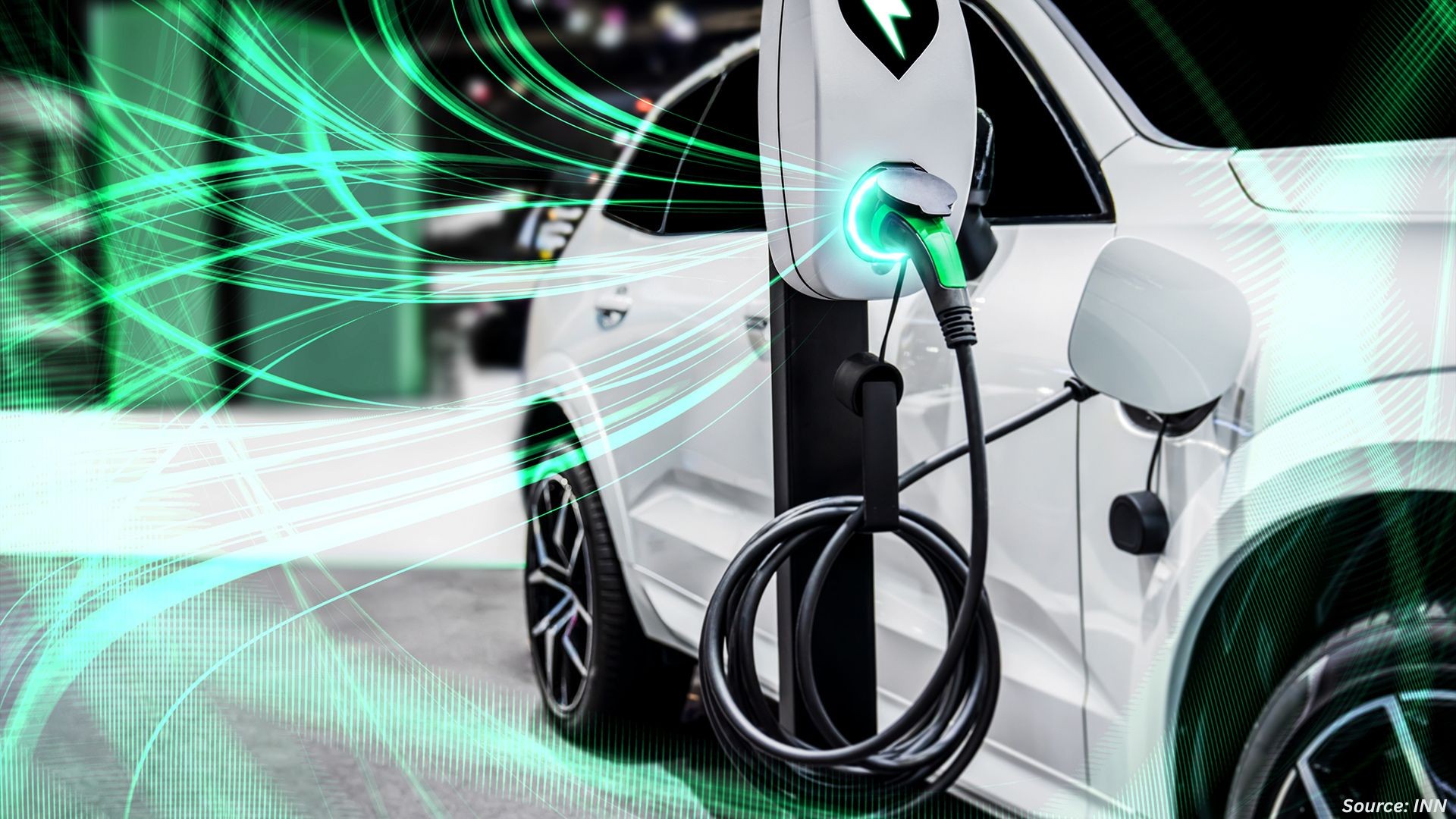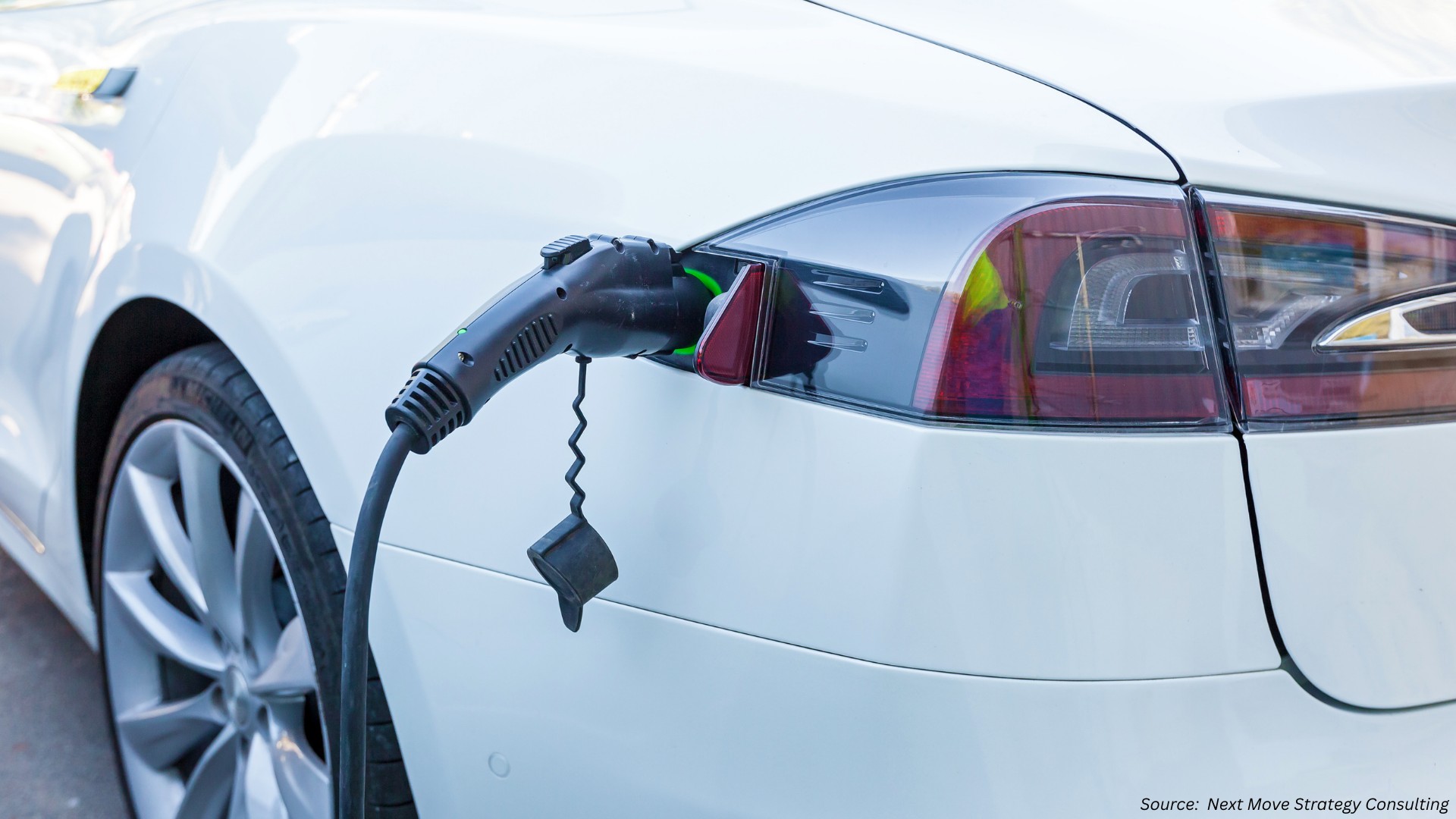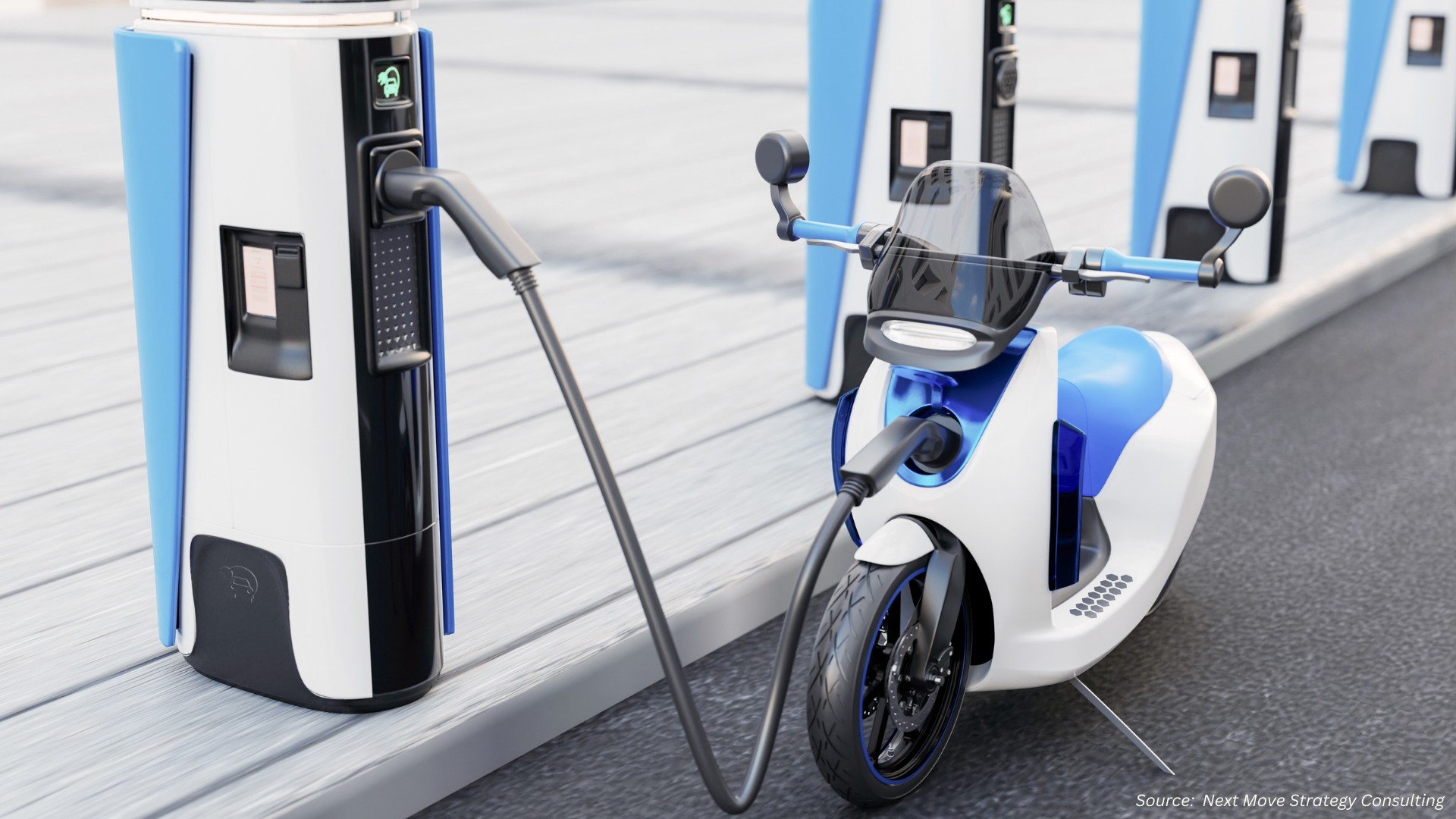
Full Hybrid Electric Vehicle Market by Component Type (Internal Combustion Engine (ICE), Battery, and Electric Motor), by Fuel Type (Gasoline - Electric Hybrids and Diesel-Electric Hybrid), by Powertrain (Series Hybrid, Parallel Hybrid, and Power Split Hybrid), and by Vehicle Type (Passenger Cars, Commercial Vehicles, Two Wheelers, and Others)- Global Opportunity Analysis and Industry Forecast 2023-2030
Market Definition:
The global Full Hybrid Electric Vehicle Market size was valued at USD 142.31 billion in 2022 and is predicted to reach USD 308.71 billion by 2030 with a CAGR of 10.1% from 2023-2030. A full hybrid electric vehicle is a type of vehicle that utilizes a combination of an internal combustion engine (typically powered by gasoline) and one or more electric motors.
Unlike mild hybrids, full hybrid electric vehicles have the capability to operate solely on electric power, solely on the internal combustion engine, or in a mode where both power sources work together. The vehicle's hybrid system intelligently manages the distribution of power based on factors like speed, load, and driving conditions to optimize fuel efficiency and reduce emissions.
Additionally, full hybrid electric vehicles can capture and store energy through regenerative braking, which converts kinetic energy back into stored electrical energy in the vehicle's battery. This technology contributes to improved fuel economy and reduced environmental impact compared to traditional gasoline-only vehicles.
Market Dynamics and Trends
The demand for the full hybrid electric vehicle market is increasing due to various government regulations and incentives. Countries such as China, U.S. and U.K have implemented regulations and policies to promote the adoption of hybrid and electric vehicles, with the goal of reducing emissions and increasing energy efficiency. These regulations and incentives can include tax breaks, grants, and other financial incentives for consumers and manufacturers. For instance, The UK government offers a Plug-in Car Grant (PICG) to reduce the upfront cost of eligible low-emission vehicles. The grant covers 35% of the cost of a car, up to a maximum of USD 2,670.
Moreover, the cost of fuel is a significant factor in the cost of ownership of a vehicle, and as fuel prices rise, consumers are more likely to consider hybrid and electric vehicles as a cost-saving option, which in turn boosts the full hybrid electric vehicle market growth. Additionally, the rising consumer awareness of the environmental and economic benefits of hybrid and electric vehicles is further boosting the growth of the market. Consumers are becoming more conscious about their carbon footprint and the impact of their actions on the environment, which is leading them to opt for vehicles that are more fuel-efficient, emit fewer pollutants and reduce their overall environmental impact.
However, the increasing demand for high-driving-range battery electric vehicles (BEVs) and fuel cell electric vehicles (FCEVs), known for noiseless operation, fast refueling, and zero-emission greenhouse gases, is restraining the growth of the market. On the contrary, development of highly efficient regenerative braking systems to capture and store kinetic energy during deceleration along with AI-driven algorithms predicting driving conditions to optimize power distribution between engine and electric motor are the factors expected to create ample growth opportunities for the full hybrid electric vehicle market in the future.
Market Segmentations and Scope of the Study
The full hybrid electric vehicle market share is segmented on the basis of component type, fuel type, powertrain, vehicle type, and geography. On the basis of component type, the market is divided into internal combustion engine (ICE), battery and electric motor. Based on fuel type, the market is divided into, gasoline-electric hybrids and diesel-electric hybrid.
On the basis of powertrain, the market is categorized into series hybrid, parallel hybrid, and power split hybrid. On the basis of vehicle type, the market is classified into passenger cars, commercial vehicles, two wheelers, and others. Geographic breakdown and analysis of each of the aforesaid segments includes regions comprising of North America, Europe, Asia-Pacific, and RoW.
Geographical Analysis
Asia-Pacific holds the dominant share of the full hybrid EV market at present and is expected to continue its dominance during the forecast period. This is attributed to the presence of China, which is the dominant country and leading electric vehicles producers in the global market. According to the International Energy Agency, China's electric car sales reached 3.3 million in 2021.
Also, the new vehicle scrappage legislation that drives existing vehicles to be scrapped for the conversion to low-emission ones that leads this region for becoming the fastest growing market for full hybrid EV across the world boosts the growth of the market. For instance, in August 2022, the Australian government introduced new regulations targeting vehicles that produce carbon emissions and is looking to increase the demand for electric cars in the country.
On the other hand, Europe is expected to show a steady rise in the full hybrid EV market due to the growing concerns regarding the negative environmental effects of vehicular emissions along with growing government initiatives to decarbonize transportation in this region. For instance, in October 2021, the UK government announced a new plan for the automakers of electric vehicles. The government planned to force automakers to sell increasing percentages of zero-emissions vehicles every year.
Moreover, the governments are choosing various types of incentives and offering subsidies on CNG hybrid and plug-in vehicles are expected to drive the full hybrid EV market growth in this region. For instance, in August 2021, the Russian government announced to offer subsidies to manufacturers of electric vehicles & batteries to co-finance the costs associated with the construction of plants. The government plans to cover 25% of the purchase price of any Russian-made electric car and target annual EV production of 220,000 units by 2030.
Competitive Landscape
Various market players operating in the full hybrid electric vehicle industry include TToyota Motor Corporation, Honda Motor Co. Ltd., Ford Motor Company, Mercedes-Benz (Daimler AG), General Motors Company, Hyundai Motor Company , Nissan Motor Corporation Ltd., Kia Motors Corporation, BYD Company Ltd., Volkswagen AG.
These market players are adopting various strategies including investment and collaboration of business across various regions to maintain their dominance in the full hybrid EV market. For instance, in March 2022, Hyundai Motor Group collaborated with Aramco on advanced fuels for hybrid electric vehicles. This partnership focused on the development of an optimal fuel formulation for use in combination with a novel combustion system coupled with an electrified hybrid vehicle. Also, in December 2021, Toyota announced an investment of USD 35 billion to build a full lineup of 30 battery-powered electric vehicles by 2030. It aims to increase global sales of battery electric vehicles by 3.5 million units a year by 2030.
Key Benefits
-
The report provides a quantitative analysis and the estimations of the full hybrid EV market from 2023 to 2030, which assists in identifying the prevailing industry opportunities.
-
The study comprises a deep-dive analysis of the current and future full hybrid EV market trends, to depict prevalent investment pockets in the market.
-
Information related to key drivers, restraints, and opportunities and their impact on the full hybrid EV industry is provided in the report.
-
Competitive analysis of the players, along with their market share is provided in the report.
-
SWOT analysis and the Porter's Five Forces model is elaborated on in the study.
-
Value chain analysis in the market study provides a clear picture of the stakeholders' roles.
Full Hybrid Electric Vehicle Market Key Segments
By Component Type
-
Internal Combustion Engine (ICE)
-
Battery
-
Electric Motor
By Fuel Type
-
Gasoline-Electric Hybrids
-
Diesel-Electric Hybrid
By Powertrain
-
Series Hybrid
-
Parallel Hybrid
-
Power Split Hybrid
By Vehicle Type
-
Passenger Cars
-
Commercial Vehicles
-
Two Wheelers
-
Others
By Region
-
North America
-
U.S
-
Canada
-
Mexico
-
-
Europe
-
UK
-
Germany
-
France
-
Italy
-
Spain
-
Denmark
-
Netherlands
-
Finland
-
Sweden
-
Norway
-
Russia
-
Rest of Europe
-
-
Asia-Pacific
-
China
-
Japan
-
India
-
South Korea
-
Australia
-
Indonesia
-
Singapore
-
Taiwan
-
Thailand
-
Rest of Asia-Pacific
-
-
RoW
-
Latin America
-
Middle East
-
Africa
-
REPORT SCOPE AND SEGMENTATION:
|
Parameters |
Details |
|
Market Size in 2022 |
USD 142.31 Billion |
|
Revenue Forecast in 2030 |
USD 308.71 Billion |
|
Growth Rate |
CAGR of 10.1 % from 2023 to 2030 |
|
Analysis Period |
2022–2030 |
|
Base Year Considered |
2022 |
|
Forecast Period |
2023–2030 |
|
Market Size Estimation |
Billion (USD) |
|
Growth Factors |
Various government regulations and incentives to promote the adoption of full hybrid EV’s is driving the market. The rising consumer awareness of the environmental and economic benefits of hybrid and electric vehicles is boosting the market growth. |
|
Countries Covered |
28 |
|
Companies Profiled |
10 |
|
Market Share |
Available for 10 companies |
|
Customization Scope |
Free customization (equivalent up to 80 working hours of analysts) after purchase. Addition or alteration to country, regional, and segment scope. |
|
Pricing and Purchase Options |
Avail customized purchase options to meet your exact research needs. |
KEY PLAYERS
-
Toyota Motor Corporation
-
Honda Motor Co. Ltd.
-
Ford Motor Company
-
Mercedes-Benz (Daimler AG)
-
General Motors Company
-
Hyundai Motor Company
-
Nissan Motor Corporation Ltd.
-
Kia Motors Corporation
-
BYD Company Ltd.
-
Volkswagen AG




















 Speak to Our Analyst
Speak to Our Analyst

























